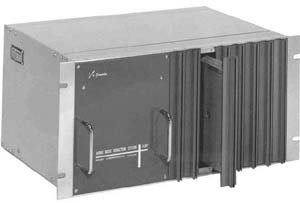Dolby Laboratories: Difference between revisions
No edit summary |
m (Text replace - "[[Category:Computers_and_information_processing" to "[[Category:Computing and electronics") |
||
| Line 17: | Line 17: | ||
Dolby’s continued leadership was again demonstrated in 1986 with the introduction of a powerful new system, called Dolby SR (Spectral Recording). The product’s intent was to bring analog recording into the digital age. By combining both the fixed and sliding band technologies invented for the earlier noise reduction systems, Dolby SR improved the performance of existing professional analog recorders to the point where they equaled, and in some respects surpassed, very costly digital recorders. Today, the company continues to develop new products for the professional and consumer markets. | Dolby’s continued leadership was again demonstrated in 1986 with the introduction of a powerful new system, called Dolby SR (Spectral Recording). The product’s intent was to bring analog recording into the digital age. By combining both the fixed and sliding band technologies invented for the earlier noise reduction systems, Dolby SR improved the performance of existing professional analog recorders to the point where they equaled, and in some respects surpassed, very costly digital recorders. Today, the company continues to develop new products for the professional and consumer markets. | ||
[[Category: | [[Category:Computing and electronics]] | ||
[[Category:Data_systems]] | [[Category:Data_systems]] | ||
[[Category:Data_compression]] | [[Category:Data_compression]] | ||
Revision as of 16:15, 22 July 2014
Dolby Laboratories
Dolby Laboratories is a longtime innovator of developing electronic devices and systems to improve recorded sound. Founded by Ray Dolby in 1965, the company’s first development was Dolby A-type noise reduction. It was basically a specially designed electronic circuit contained in a compact metal case. It was not a recording machine, but it could be attached to a recorder to improve its sound.
Dolby A was a new form of a technique called audio compression and expansion, which was used for many years in recording and radio studios. Dolby A used a refined version of audio compression/expansion to dramatically reduce the background hiss inherent in professional tape recording. This meant that studio recordings sounded better than ever. The company manufactured Dolby A units and sold them primarily to recording studios in England and the United States. The success of this product laid the foundation for new developments in consumer audio and motion picture sound.
Ray Dolby next developed a consumer version of the Dolby A system at the urging of Henry Kloss, an American audio pioneer and president of KLH Research and Development Corporation. The result was the 1968 introduction of Dolby B-type noise reduction, intended for home tape recorders.
Instead of manufacturing Dolby B units and selling them to consumers, the company instead sold the plans for the technology to existing manufacturers of home audio equipment. The first consumer product to incorporate Dolby B-type noise reduction, under an exclusive license lasting until 1970, was an open-reel tape recorder brought to market by KLH in 1968. While this unit offered high performance, it was used only with the cumbersome open-reel format, which never enjoyed wide consumer acceptance.
The real success of Dolby B was with cassette tape recorders. At the time, the cassette was considered inferior to home reel-to-reel tape recorders and 8-track tapes, but the addition of Dolby catapulted the cassette forward. Dolby Laboratories was able to use Dolby B to create cassette recordings that rivaled LP records for high fidelity. This proved the value of noise reduction to manufacturers and consumers. Soon the company was licensing the Dolby B system to cassette recorder manufacturers around the world.
The income generated from cassette recorders gave Dolby resources to develop other products. In 1975 Dolby Laboratories introduced Dolby Stereo, a product aimed at motion picture producers and theaters. Dolby Stereo was used with existing 35-mm optical soundtracks, but with important changes. At the studio, stereo soundtracks were recorded using Dolby equipment. At the theaters, a Dolby unit and new loudspeakers were added to the existing projection equipment. The result was much higher sound quality. The film Star Wars was among the first motion pictures to be recorded using Dolby Stereo, and positive audience reaction gave many theater owners the incentive to replace their low-fidelity, monophonic sound systems. Dolby Stereo later became known as Surround Sound, and a similar technology is currently used for home theater systems.
Dolby’s continued leadership was again demonstrated in 1986 with the introduction of a powerful new system, called Dolby SR (Spectral Recording). The product’s intent was to bring analog recording into the digital age. By combining both the fixed and sliding band technologies invented for the earlier noise reduction systems, Dolby SR improved the performance of existing professional analog recorders to the point where they equaled, and in some respects surpassed, very costly digital recorders. Today, the company continues to develop new products for the professional and consumer markets.
